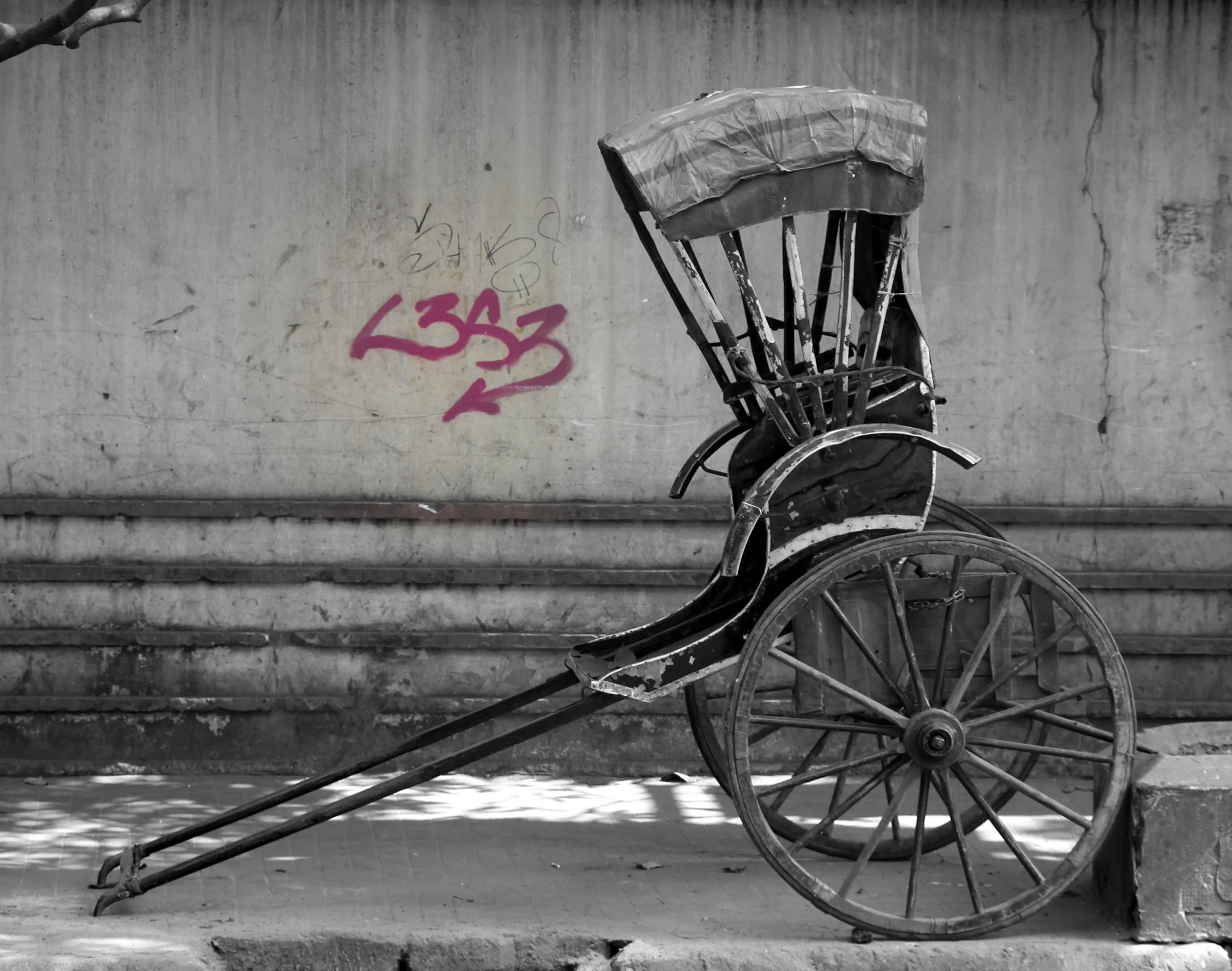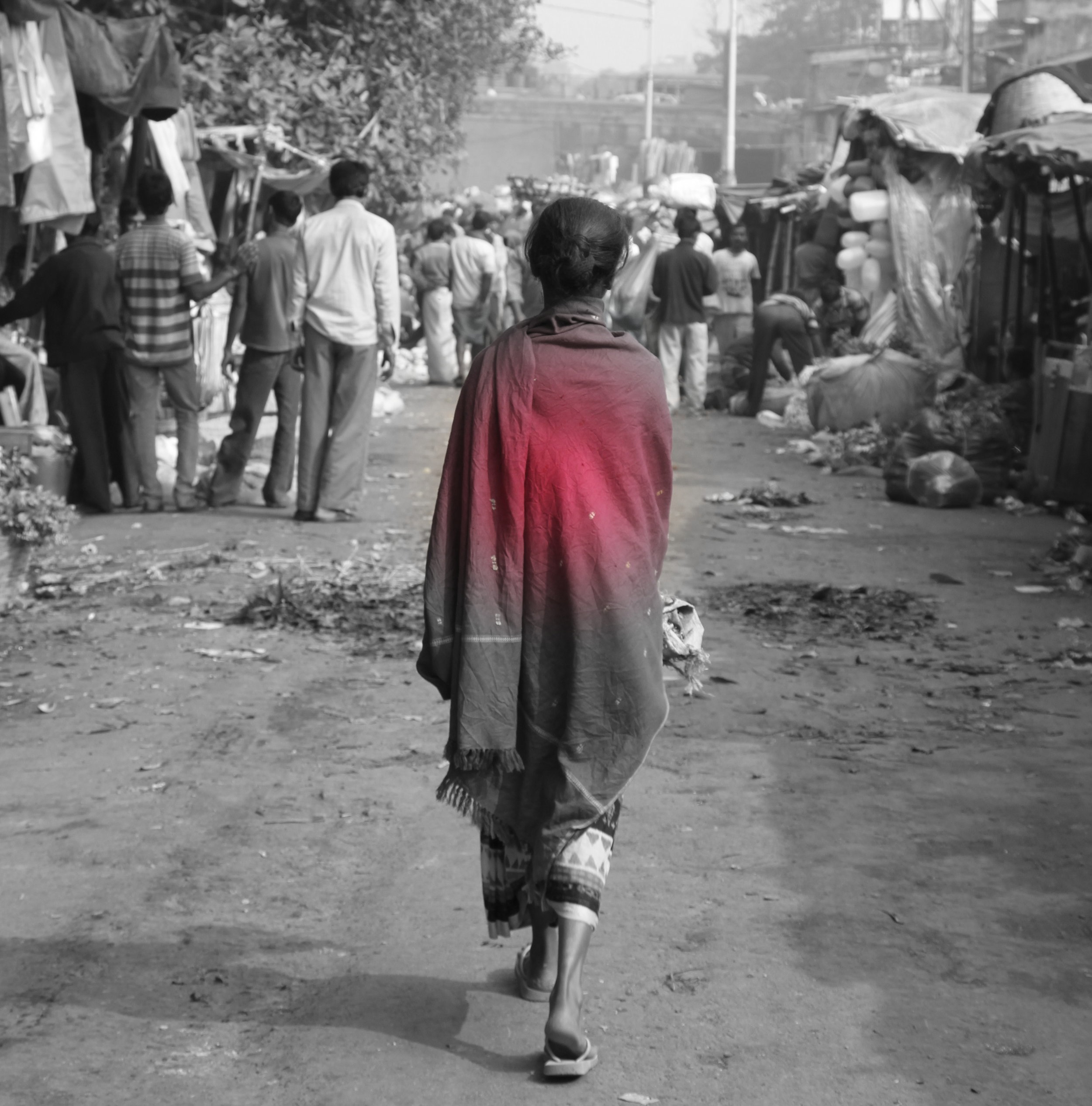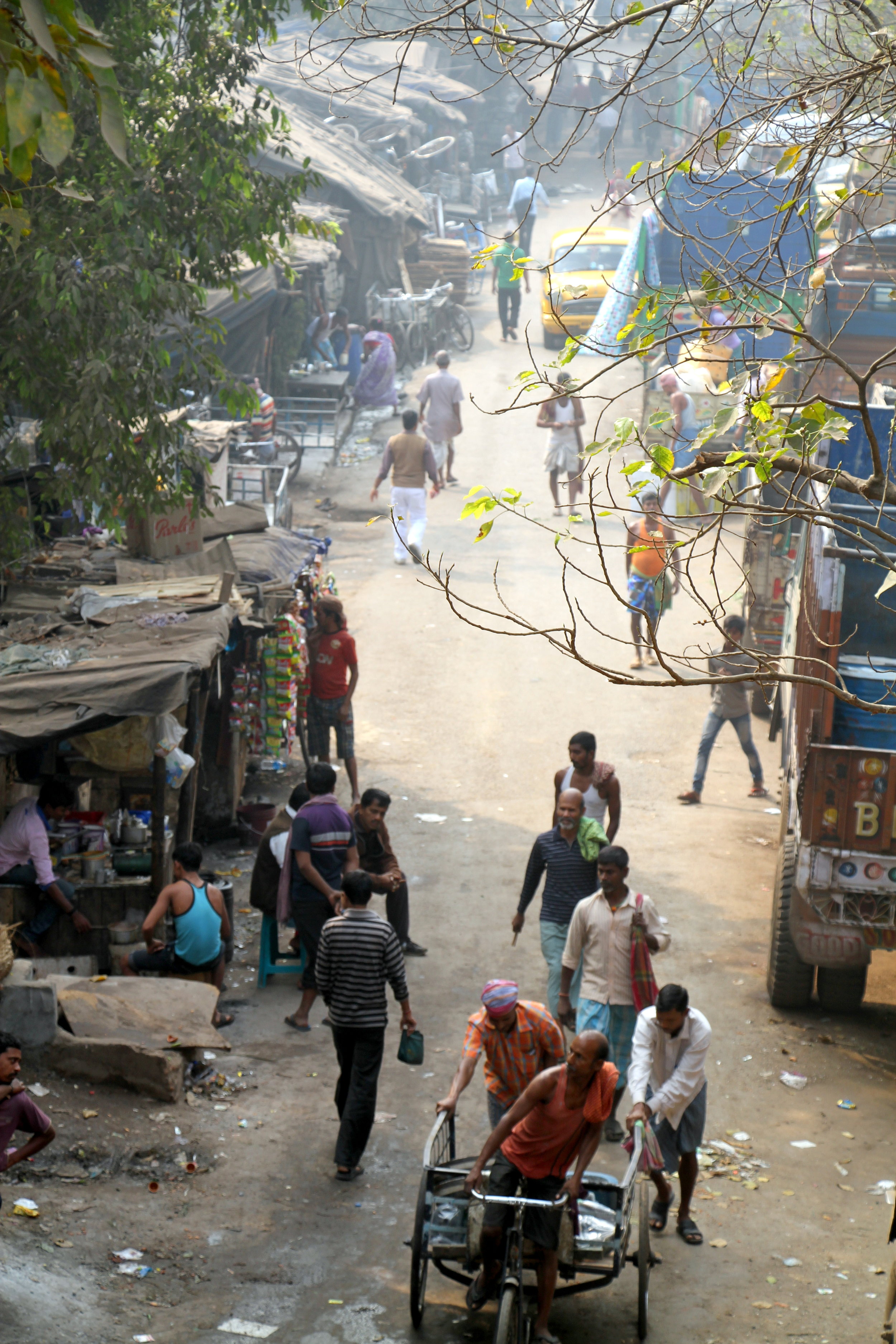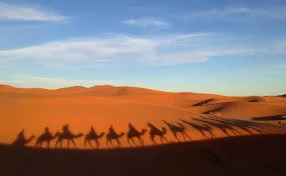Oh Kolkata ! One Of India's Most Vibrant Cities.
On my frequent travels I usually try to reach a new city during daylight hours so that I can orientate myself to unfamiliar surroundings. So, naturally, I arrive in this sprawling, crowded city a little after midnight and, to add insult to injury my bags have decided to take a separate trip to Kuala Lumpur in Malaysia!
After an hour spent at the airport, filling out myriads of forms to try and track down said pesky missing bags, I am finally able to climb into the back of an ancient Ambassador taxi which, after a little haggling over the price, will take me to my lodgings in downtown Kolkata.
My driver seems to be as old as the vehicle itself and, once we take off he immediately insists on dousing his headlights so that we find ourselves travelling along ill lit roads in almost total darkness. When I ask him why he feels the need to switch off the only illumination along the highway, he informs me that, “it is to be saving the battery sir, for in India they are very expensive”
Who am I to argue?
The journey into the city takes about an hour and through the grimy windows of the car I observe only deserted streets with houses and offices closed and shuttered and there is not a soul in sight, which I find odd given that the population of this metropolis is estimated to be in excess of twenty million people. The only discernible movement are packs of dogs who roam like marauding gangs through the ill lit alleyways and side streets, no doubt in search of food or mischief or perhaps both.
The following morning, having found the “Fawlty Towers’ type establishment where I spent the night, I awake early and head out to see if perhaps the entire population has somehow been spirited away during the night.
Its 5.30am and the streets, apart from a few sleepy rickshaw drivers dozing in their vehicles, are virtually empty.
This for me is the perfect start as I make my way slowly towards Kolkata’s famous flower market situated on the banks of the Hooghly River. Given the quietness I am able to wander in the middle of roads that I presume will soon be choked with a myriad of vehicles and one would hope, pedestrians?
The market itself is a riot of colour filled with every kind of bloom imaginable all being stacked and arranged by diligent stall owners each hunched over piles of marigolds, roses, lilies and other species unknown to me. They pay me scant attention, devoted as they are to their varying tasks of creating bouquets, wreaths, temple offerings and elaborate, over the top creations bound no doubt for equally over the top elaborate wedding celebration.
It is now just on 7am and Kolkata has finally decided to rouse itself from its slumber as it tosses, turns and suddenly belches out the eight million or so cars, tuk tuks, busses and assorted vehicles that begin to clog the streets, each using their horns as a rite of passage. The quiet of the morning is shattered in an instant, replaced by the cacophony of traffic noise.
To escape I make my way down to the relative silence of the banks of the river to map out my day and watch, intrigued as pilgrims immerse themselves in the brown waters of the Hooghly, praying and scattering small offerings which are instantly swept away by the strong currents.
This mighty body of water is a 260 km tributary of India’s most sacred of rivers, the holy Ganges or Ganga in West Bengal. Looking south to Howrah Bridge now known as the Rabindra Setu, which links the cities of Kolkata and Howrah is a major pedestrian thoroughfare for those heading into the city to work. Squinting thought the early morning haze it appears as if an army of ants is heading my way as over four million workers use this bridge each and every day!
One of my primary reasons for visiting Kolkata was to try and visit as many of the British colonial monuments as my relatively short stay would allow. These imposing buildings designed and erected during the two hundred years when India was an integral part of the vast British Empire. Kolkata in a way was rather blessed as it acquired quite a few stunners during the British reign.
These often-monolithic structures bear testament to the architectural grandeur that served the various purposes of governments of the time. Today, seventy odd years after the departure of the British, they still form some of the most important landmarks and major tourist attractions in the city.
So, let’s get started.
The first stop on my quest was to the rather imposing Kolkata Town Hall (4 Esplanade Row West) designed by renowned architect Col. John Garstin. Built in the Roman Doric style, the two stories of this distinctive building stand on eight, elegant long pillars, supporting a structure covering more than 1,200sq meters! It was originally built with the sole purpose of providing Europeans with a place to socialize! In order to fund this giant project the expatriates raised the cash by creating India’s first ever lottery during 1864. In 1867 the building finally came under the custody of the then Calcutta Municipality.
And of course, I’m going to say Writers Building is an absolute gem, which may today serve as the secretariat of the West Bengal State Government, but certainly epitomizes the classical European architecture of the time. This colossal building, completed in 1889 was purpose built to house the all-powerful British East India Company. A century and a half later the building has lost none of its original grandeur.
With my morning spent wandering around the Town Hall and the Writers Building complete, it was time to move on to one of my all time favorites.
I am a bit of a tragic when it comes to classical train stations and hotels and therefore I was positively drooling at the prospect of seeing Howrah Station up close and personal and, when I came upon it, it certainly didn’t disappoint!
Constructed in 1854, this wonderful example of colonial architecture was built to create a second railway link from Kolkata to the Bardhhaman coalfields. On its completion, it housed just one line and a solitary platform for the intention of carrying goods. It was only later that a further eight platforms were added and at that point passenger travel by rail came of age. It has steadfastly retained its imposing façade even after several additions and renovations. It remains today as the one of the busiest railway terminals in the country bearing testimony to the wonderful skills of the original designers and engineers. In a way, I almost prefer this station to the magnificent, but brooding Gothic style of Victoria Station in Mumbai.
For a peek at the sheer indulgence of the time, a visit to the Raj Bhavan is a must. It was built between 1799 and 1803 for the Marquees of Wellesley, the then Governor- General of India; this over-the-top pile is a statement of British imperialism at its most arrogant. However, the majestic architecture and décor is breathtaking as well as having the distinction of being the first building to contain a working elevator in Kolkata.
The General Post Office. Again this is another spectacular British monument that has managed to stand the test of time. (Even though Mark Twain deemed it too European. Constructed in 1861 and designed by Walter B. Grenville it is famous for its tall, Ionic-Corinthian pillars and a soaring domed roof. Now, 150 years later it is still the city’s main post office, handling mail on a daily basis far beyond the bounds of the imagination in the late 19th century. And the charming postal museum added in 1864 with a continuing and impressive array of rare stamps and artifacts.
Great Eastern Hotel. This grand old lady has been around since the city served as the capital of the East India Company. During its heyday it was fondly referred to as “the Jewel of the East” and any celebrity worth his or her salt would grace the corridors and outdoor verandahs, for it was the place to be seen. Over time, especially during the years of the Naxalite movement, the splendor and certainly the prosperity of the hotel declined and the building, sadly fell into disrepair for decades. In 1970 management of the hotel was taken over by the state government but it never managed to recapture the magic of its glory days.
Metropolitan Building. This imposing structure previously known as the Whiteway Laidlaw department store was one of the more fashionable department stores in India during the colonial era. With its arched, recessed windows soaring domes and clock towers the emporium represented a fashionable precinct for up- market expatriate shoppers of the era. Following independence in 1948 its fortunes declined and the insurance giant, Metropolitan Life, now occupies the building.
The Oberoi Grand. This majestic structure is a deserved monument representing the finest of splendid British colonial design. Previously known as the Grand Hotel, it is now owned and operated by the Oberoi chain of hotels. Once fondly known as the Grand Dame of Chowringhee it is unlike other luxury hotels, is situated in a prime location in close proximity to the markets, business districts and cultural landmarks of the city. The Oberoi Grand Hotel was the first hotel to be acquired by Rai Bahadur M.S. Oberoi, founder of the Oberoi Group. It was under its stewardship that it became one of the leading hotels in the world and retains its title today.
A classic refurbishment brought the building back to its original glory worthy of its place in the 21st Century. It continues to stand testament to the elegant neoclassical style complete with fine examples of stucco ornamentations. It also earned its place in history when it came to prominence during World War11 for lodging over 4000 soldiers and officers. There are stories of rollicking all night parties that would rival anything that we see today.
I have only covered eight of the colonial buildings in and around Kolkata as; to be honest these are my favorites. There are a lot more to explore, if you have the time including, St Paul’s Cathedral, The Calcutta High Court, Esplanade Mansions and Victoria Monument to name a few. Most good guidebooks will list them all with directions on how to get there as well as listing opening and closing times.
Kolkata for me is one of the more vibrant cities in India, far removed from the stuffiness of Delhi or the brashness of Mumbai. It is a pleasant city to wander, as there always seems to be a surprise around every corner. Coupled with that, its modern skyline has blended seamlessly into the fabric of the heritage buildings that still pepper this marvelous city. As always, it is always one of those cities I am always a little sad to leave and promise myself that I will return, next time arriving in the daylight complete with my luggage.
Paul v Walters is the author of several best selling novels and when not cocooned in sloth and procrastination in his house in Bali, he scribbles for several international travel and vox pop journals.
First Published Oberoi Magazine 2018
All Photographs Copyright Paul v Walters & E.J Lenahan





















